Four family-style recipes for an easy Lebanese feast at home
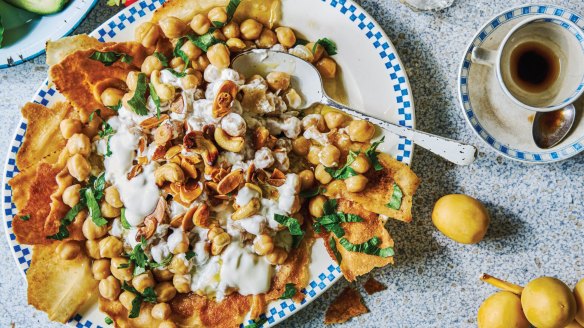
Build your own Lebanese feast with these traditional recipes from Beirut-based Hisham Assaad.
Fatteh (Chickpeas and garlic yoghurt with fried bread)
Fatteh, which comes from the Arabic for crumbling bread (fatta al khobz), is one of those recipes that went from being a leftovers solution to a glamorous dish. It uses stale bread that's toasted or fried and crumbled to create a base, which is then covered with yoghurt and other savoury toppings. The varieties are endless and they change based on what you have in your cupboard and what meal you're serving it for. Layer the fried or toasted crumbled bread at the bottom to soak up the delicious juices from the other ingredients and top with chickpeas and garlicky yoghurt with fried nuts for a mix of textures.
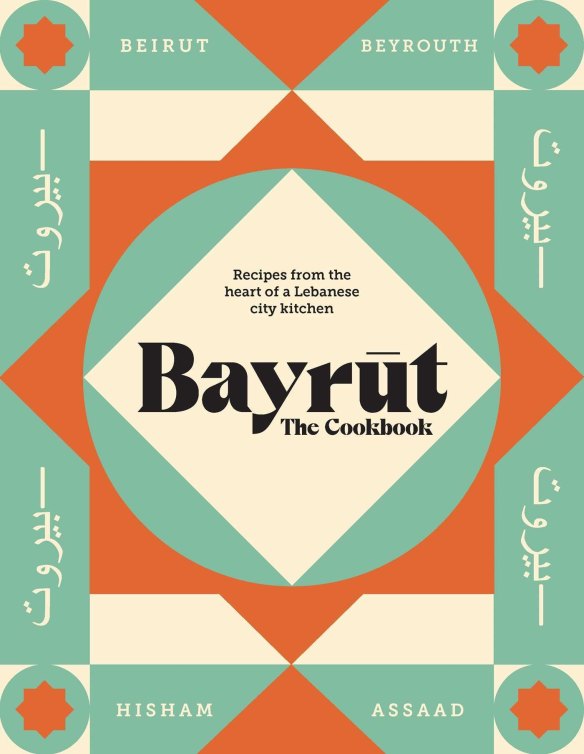
INGREDIENTS
- 250g (1 cup) dried chickpeas or 2 x 400g cans
- 2 garlic cloves
- 1 tsp sea salt
- 500g (2 cups) plain yoghurt
- 50g pita bread
- 2 tbsp butter or ghee
- 1 tbsp olive oil
- 50g (scant ½ cup) cashews
- 50g (⅔ cup) slivered almonds
- 50g (scant ½ cup) pine nuts (optional)
- pinch of paprika, for dusting
METHOD
- If using dried chickpeas, soak them overnight in plenty of water.
- The next day, drain the chickpeas, place in a saucepan and cover with plenty of fresh water. Bring to the boil, then skim off the foam with a slotted spoon. Reduce the heat and simmer for 1-1½ hours until the chickpeas are cooked and tender. Drain, reserving ½ cup of the cooking liquid, and let cool slightly. Alternatively, drain the tinned chickpeas, reserving ½ cup of their soaking liquid, and heat through in a saucepan with the reserved liquid.
- In a pestle and mortar, smash the garlic with the salt. Mix with the yoghurt. Toast or fry the pita bread and break into large pieces. Place the pieces at the bottom of a large serving bowl and lightly soak the bread with some of the chickpea cooking liquid. (If you prefer a little crunch to your fatteh, reserve some of the crispy bread in a separate bowl to serve alongside.) Top with the cooked chickpeas, then drizzle over the garlic yoghurt.
- Meanwhile, heat the butter/ghee and olive oil in a pan and toast the nuts until golden. Scoop the nuts and the hot butter/oil mixture over the yoghurt, dust with paprika and serve immediately.
Serves 4
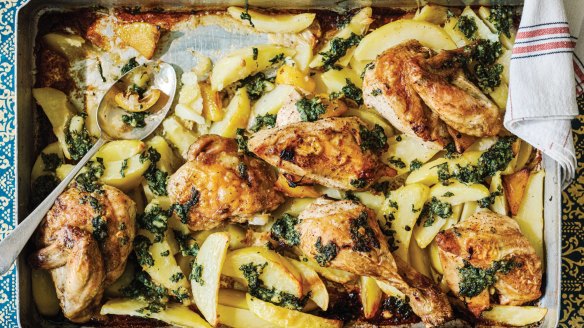
Djej w batata maa' toom w hamod (Chicken and potato traybake with lemon and garlic dressing)
On days when you just need a good quick fix, this dish comes to the rescue. Simple comfort food with accessible ingredients and the least cooking possible. There is something comforting for me in the flavours of garlic and lemon – they taste like home; a happy memory of home. We'd have this dish for lunch with nothing but a basic salad on the side and lots of thin soft bread to wrap bite-sized pieces of chicken and potatoes moistened with the lemon and garlic sauce. For me, this dish is a whole sensory experience, from the fragrant smell to the delicious appearance, followed by touch and taste. My mother would sometimes stray away from the traditional flavours and sprinkle over some dried thyme to give the dish a different dimension.
INGREDIENTS
- 2 kg chicken (whole, breast, thighs or a mix), cut into pieces if using whole
- 1 lemon, halved
- 1 tsp white pepper
- ½ tsp ground nutmeg
- 250ml (1 cup) olive oil
- 2 kg potatoes, peeled and cut into wedges
- 100g garlic
- bunch of (about 50g) coriander, finely chopped
- 250ml (1 cup) lemon juice salt pita bread, to serve
METHOD
- Preheat the oven to 160 fan-forced (180C conventional).
- Rub the chicken pieces with the halved lemon, white pepper, nutmeg, 2 teaspoons of salt and half of the olive oil. Place the chicken pieces in a roasting pan and bake for 15-20 minutes.
- Meanwhile, boil the potato wedges in a large pan of salted water for about 15 minutes, or until fork tender. Drain and add to the chicken tray.
- Pound the garlic together with about 1 teaspoon of salt in a pestle and mortar until creamy, then transfer to a bowl and mix with the coriander, lemon juice and the remaining olive oil.
- Drizzle the dressing over the chicken and potatoes, ensuring everything is well coated, and return to the oven for a further 30 minutes, or until the potatoes start to brown and crisp around the edges.
- Serve with pita bread for scooping.
Serves 6
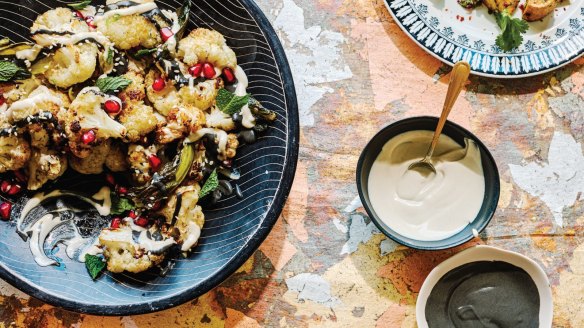
Arnabit meshwe maa' qizha w t-heene (Roasted cauliflower with black and white tahini)
Even though vegetarian food in Lebanese cuisine is plentiful, a fried cauliflower wrap has a special place in the hearts of vegetarians and carnivores alike. Almost every corner sandwich shop serves this delicious sandwich. I like this lighter, roasted version to serve as a side dish, as cauliflower tends to absorb oil and become soggy when fried. Blanching the cauli first helps it retain moisture.
Black tahini is not very common in Beirut, but is popular in south Lebanon and Palestine. It is made from habbet el barake (nigella seeds or black cumin), which means 'the blessings seed' for its nutritious qualities. For that, and for colour and a flavourful twist, I use both tahinis here, but feel free to use whatever you can find.
INGREDIENTS
- 1 kg cauliflower, broken into medium-sized florets
- 3 tbsp olive oil
- 1 tsp sea salt
- ½ tsp ground cumin
- ½ tsp garlic powder
For the white tahini sauce - 150g (generous ½ cup) tahini
- 75ml (5 tablespoons) cold water
- 100ml (scant ½ cup) lemon juice
- ¼ tsp sea salt
For the black tahini sauce (optional) - 100g (⅓ cup) black tahini
- 50g (3 tbsp) tahini
- 75ml (5 tbsp) cold water
- 100ml (scant ½ cup) lemon juice
- ¼ tsp sea salt
To serve - sesame seeds, for sprinkling
- pomegranate seeds, for sprinkling
- small handful of mint leaves
- 1 lemon, cut into wedges
METHOD
- Preheat the oven to 180C fan-forced (200C conventional). Line a baking tray with baking paper.
- Bring a pan of water to the boil, add the cauliflower and cook for 2 minutes, then drain and immediately plunge into iced water. Drain and dry.
- In a large bowl, gently toss the florets with the olive oil, salt, cumin and garlic powder. Arrange, well spaced, on the baking tray and bake for 30 minutes, turning the florets halfway through cooking.
- Meanwhile, prepare the white tahini sauce by mixing all the ingredients until well incorporated. Don't worry if the tahini breaks – keep whisking and it'll come together. Repeat the process to make the black tahini sauce, if using.
- Serve the roasted cauliflower florets on a large serving plate, drizzled with the two tahini sauces to make a stripy zebra pattern. Sprinkle with sesame seeds, pomegranate seeds and mint leaves and serve with lemon wedges on the side.
Serves 4
Nammoura (Semolina and coconut cake)
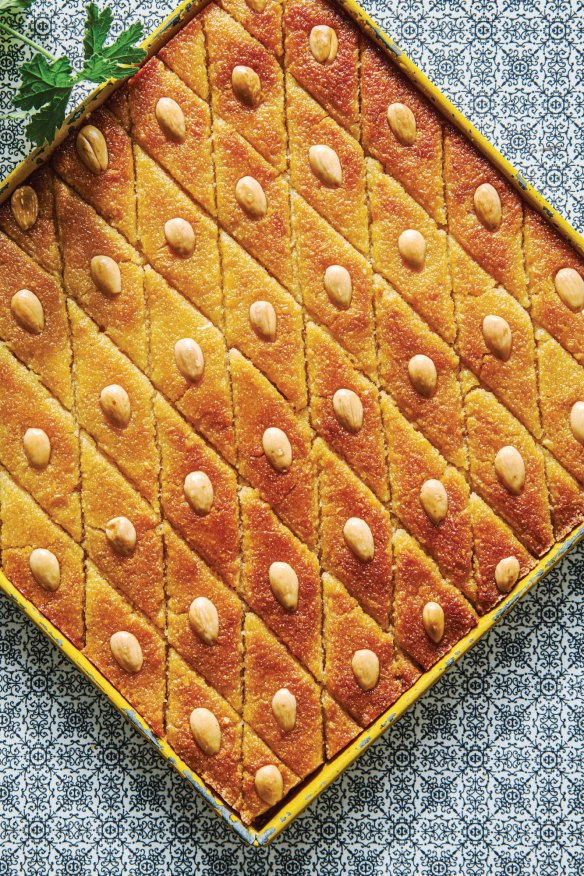
Nammoura is a fudgy, moist coconut cake with semolina and yoghurt as a base. There are a couple of recipes for it in my mother's old recipe book, but I asked her for the easiest and most fail-safe one and here it is. The prepared batter looks very runny before baking, but the semolina absorbs the liquid and it bakes into a fine, soft cake.
Don't be afraid of the syrup quantity. The cake will absorb it and it creates the essential nammoura texture without being overly and sickeningly sweet. My mother couldn't let go of the fact that I used half of the syrup in the first testing, so don't make the same mistake – otherwise she'll judge you too!
INGREDIENTS
- 40g (½ cup) desiccated or freshly grated coconut
- 120ml (½ cup) vegetable oil
- 300g (2 cups) coarse semolina
- 400-500g (1⅔–2 cups) plain yoghurt
- 230g (1 cup) caster sugar
- ¼ tsp salt
- 1 tsp baking powder
- tahini, for brushing the pan
- 32 blanched almond halves
For the syrup
- 375ml (1½ cups) water
- 450g (2 cups) caster sugar
- 1 tsp lemon juice
- handful of rose geranium leaves (if available)
- 2 tbsp rosewater
- 2 tbsp orange blossom water
METHOD
- Preheat the oven to 160C fan-forced (180C conventional).
- Toast the coconut in a pan or on a baking sheet in the oven until golden.
- In a large bowl, rub the oil into the semolina until well coated. Add the toasted coconut, yoghurt, sugar, salt and baking powder and mix well. The mixture is supposed to be quite wet and runny, so adjust the mixture depending on the thickness of your yoghurt.
- Brush a 23cm square, deep-sided baking tin with a little tahini to prevent sticking and pour the batter into it. Lightly score the top of the batter into squares or diamonds and place an almond half in the middle of each section. Bake for 20-25 minutes until the sides are browned and pulling away from the tin – that means the bottom is done.
- Meanwhile, preheat the grill to high. Transfer the tin to the grill for 5 minutes until the top is golden.
- Meanwhile, prepare the syrup by mixing the water, sugar, lemon juice and rose geranium leaves, if using, in a saucepan over a medium heat, stirring until the sugar has dissolved. Boil for 5 minutes, then remove from the heat and stir in the rosewater and orange blossom water. As soon as it comes out of the oven, douse the nammoura with all of the syrup. It might seem like a lot, but trust me – the cake will soak it all up when it is hot.
- Allow it to cool a little, then cut into the pre-scored sections and allow to cool completely before serving.
This is an edited extract from Bayrut: Recipes from the Heart of a Lebanese City Kitchen by Hisham Assaad, Smith Street Books, RRP $55.00. Food photography: Liz and Max Haarala Hamilton. Buy now